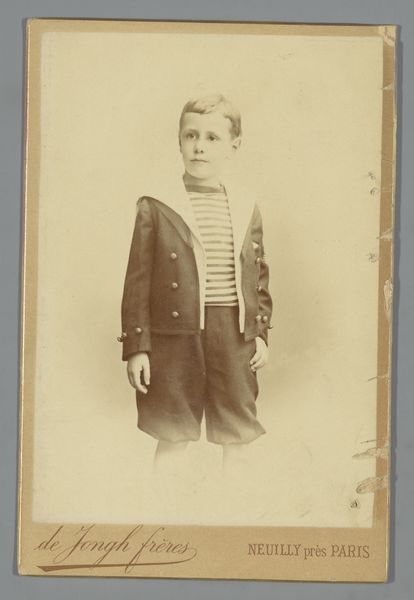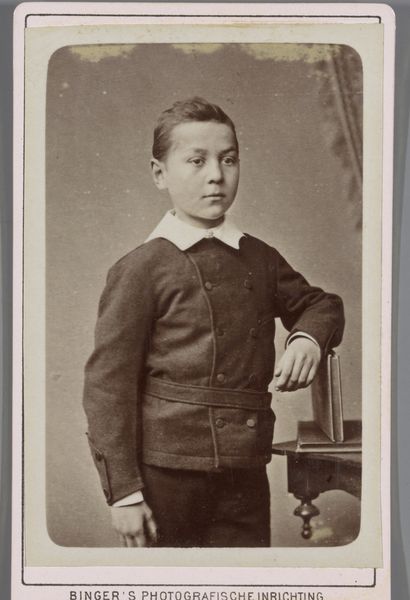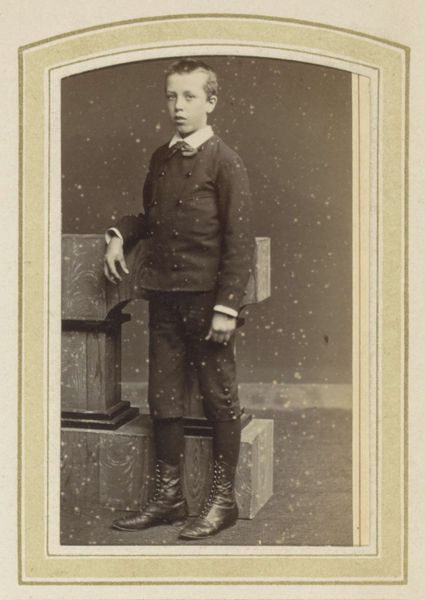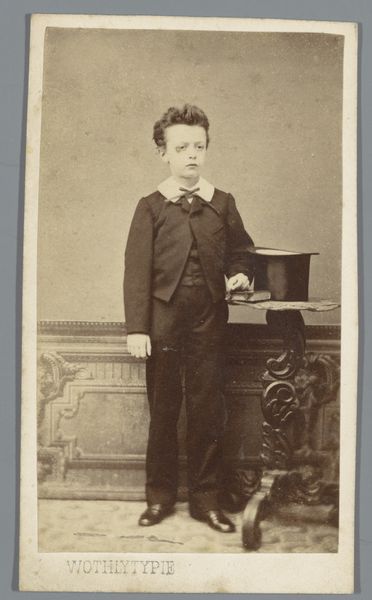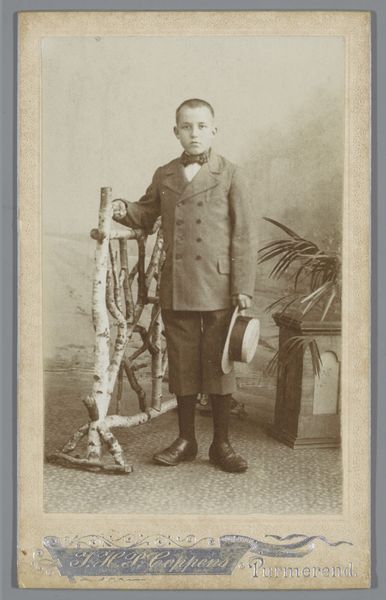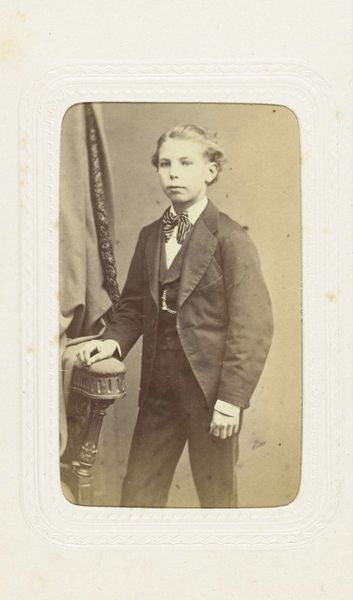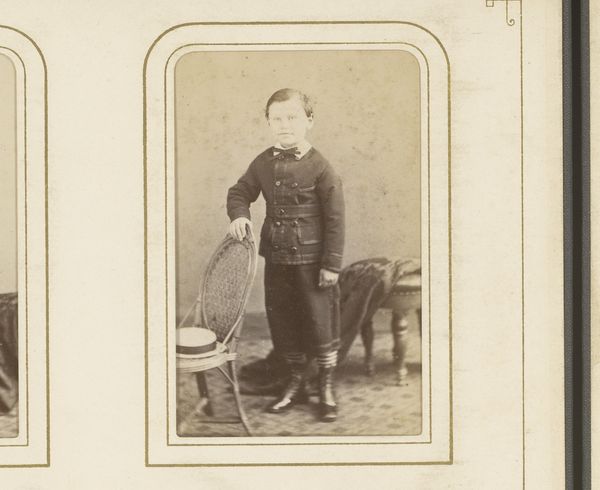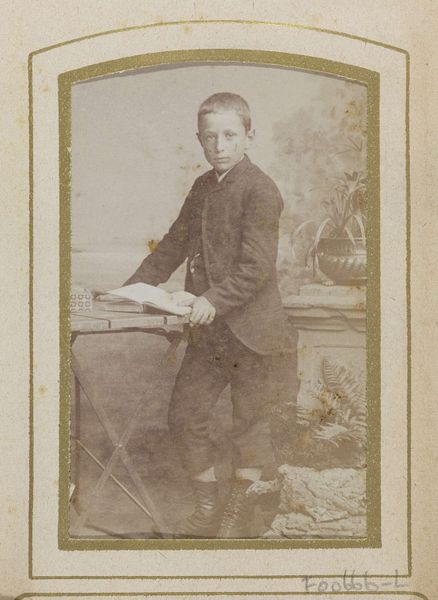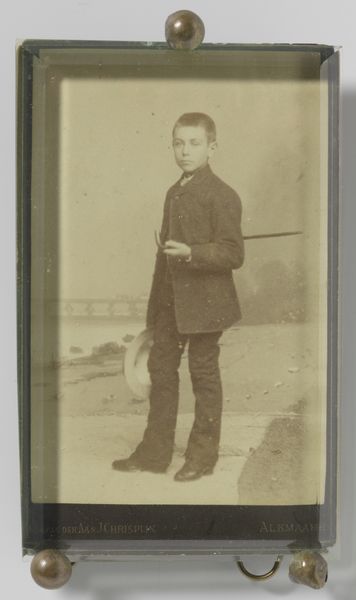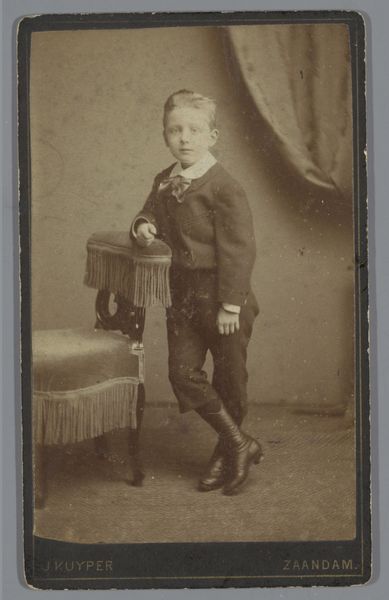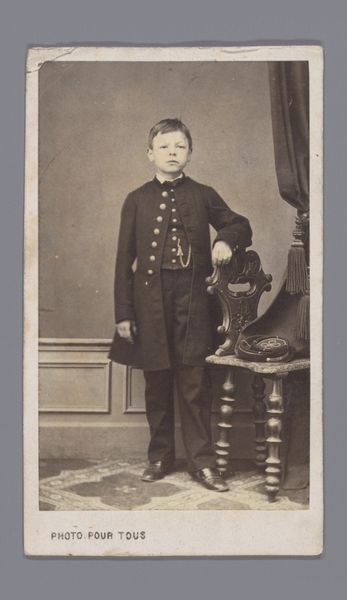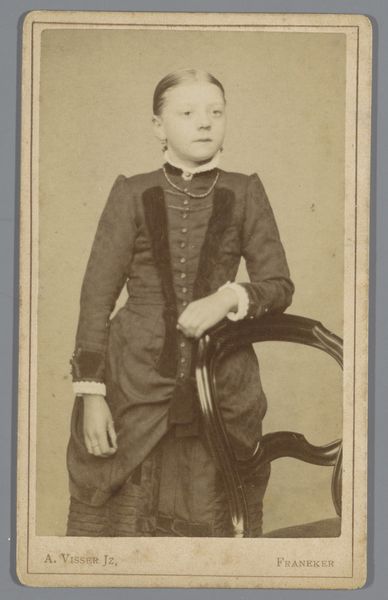
Dimensions: height 105 mm, width 65 mm
Copyright: Rijks Museum: Open Domain
Editor: Here we have Johannes Ephraim's gelatin-silver print, "Portret van een onbekende jongen," made sometime between 1878 and 1905. The formality and staging are interesting. What strikes you most about this portrait? Curator: Well, on the surface, it's a rather standard 19th-century portrait. But I'm drawn to the implications surrounding "an unknown boy." Who was he, and why has his identity been lost? Consider the power dynamics at play: a photographer capturing an image, potentially of someone from a marginalized community, stripped of their name and individual story by historical narratives. This brings to mind questions of representation, agency, and the politics of visibility. Editor: So you're suggesting the "unknown" status might be less about actual anonymity and more about… erasure? Curator: Exactly. Whose stories are valued and preserved? Whose are conveniently forgotten, or worse, actively suppressed? The image also reflects the socio-economic status reflected in clothing and demeanor. But doesn't it also serve as a symbol of countless untold histories, the countless children whose names and lives remain unrecorded, particularly those from less privileged backgrounds? The formal attire and careful posing speak to a certain class aspiration, but it simultaneously masks individuality, doesn’t it? Editor: I never considered that the lack of a name could be such a potent statement about historical inequalities. It makes me question all the portraits I’ve seen, really. Curator: It’s vital we look beyond the surface and critically engage with what's presented, question what is left unsaid and begin actively filling these gaps with more inclusive narratives. Editor: I'll definitely be approaching historical works with a more critical eye from now on. Curator: That’s the aim. It's in these silences and unknowns that the most critical conversations begin.
Comments
No comments
Be the first to comment and join the conversation on the ultimate creative platform.
